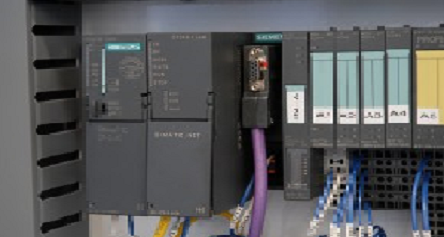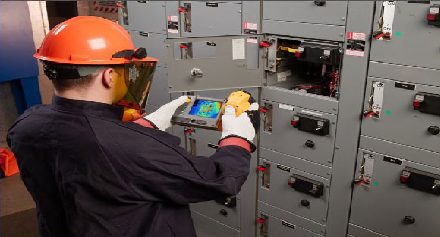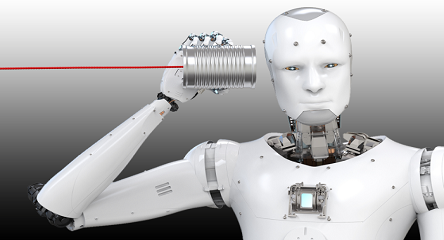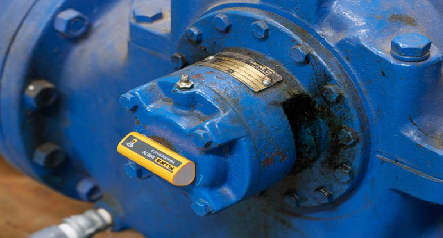Terms like predictive maintenance, condition based maintenance, and reliability-centered maintenance, have undergone commercially-driven changes for over 30 years. In the 1990s and into the early 2000s the direction for the terms was to identify areas for improvement to extend equipment life, wear detection and mitigation, and fault/defect detection when needed. The purpose was to move organizations in a direction away from reactive maintenance. Condition Based Maintenance (CBM) in particular was defined (ref. Federal Energy Management Program – FEMP) as a strategy where equipment and systems are monitored to gather data on their actual condition, and maintenance tasks are then performed based on this data, rather than a fixed schedule or after a set time period. In effect, FEMP also viewed how CBM could contribute to energy savings, improved efficiency, and reduced costs in Federal facilities. Utilizing CBM techniques, as defined, can assist organizations in ensuring their systems are operating optimally, which in turn can reduce energy consumption and costs.
What we have noted over the past several years, especially after the growing hype surrounding IIoT, is a rapid devolution of this concept towards an automated reactive maintenance process disguised behind the terms CBM, PdM and Digital Transformation. Sales and marketing practices have moved away from identifying and mitigating gradual wear to fault-finding (anomaly detection) devices only meant to find defective components with claims surrounding remaining useful life, which, in itself, defeats the purpose behind PdM and CBM. The concept of RUL is the average time to failure from implementation or defect detection – MTTF – from history and not based upon the continuous degradation of the specific device being measured, as is the purpose of PdM.
So, what is it we are supposed to be accomplishing with CBM if not detecting failures such as bad bearings, winding faults, etc.? CBM as a maintenance strategy dictates that maintenance should only be performed when certain indicators show signs of decreasing performance or the potential for defects. For example, the use of differential pressure to identify when filters should be replaced in an air handling system, the use of ultrasound to determine when to grease bearings, or electrical signature analysis to determine the optimal efficiency of a motor alignment, lubrication interval or when to correct power quality. These activities are mostly to identify how to increase the useful life of an asset, improve energy consumption and related emissions, and determine the reliability of an asset for a specific period of time. This involves monitoring with technologies through inspections, IoT, and data collection systems, as well as analysis of these records, and then performing necessary actions to mitigate potential defects.
Predictive Maintenance, an unfortunate misnomer, is a function of CBM that focuses on testing to evaluate for improving operations and equipment reliability and includes:
- Performance Testing and Analysis: checking equipment to ensure it operates at optimal parameters. This includes assessing factors such as efficiency, throughput and other operational metrics. By measuring these, one can fine-tune processes or settings to achieve better reliability and performance.
- Benchmarking: Comparing equipment performance to industry standards or similar equipment in the facility. This can help identify gaps in performance and areas for improvement.
- Lubrication Analysis: Beyond just detecting wear, analyzing the quality and properties of lubricants can help maintain equipment efficiency as well as impact lifespan and reliability of equipment.
- Thermographic Inspections: Using infrared technology to identify hot spots in electrical equipment for efficiency improvements, including building envelope.
- Electrical Signature Analysis: Using ESA to identify complete electrical system condition as well as the identification of areas to improve efficiency, maintenance practices and energy/emissions direct measurements related to maintenance practices and commissioning.
- Harmonic and Power Quality Analysis: A function of ESA determining distortion in the power, ground and neutral systems will lead directly to increased reliability and efficiency while reducing energy and emissions when opportunities are pursued.
- Vibration Analysis: Used for the detection of mechanical opportunities is used for improving efficiency, maintenance practices, and commissioning.
- Motion Amplification: Used for evaluating structural conditions for improvements for improved efficiency, commissioning, and operations.
- Ultrasonic Leak Detection: Especially in pneumatic systems, using ultrasonic tools to detect leaks can lead to significant energy savings and increased system efficiency and reducing waste stream.
- System Calibration: Ensuring measurement devices and controls are calibrated correctly can greatly improve system reliability and performance.
- Capacity Testing: In systems such as batteries, storage systems, and electrical system (i.e.: loading) are used as methods for identifying insights into equipment health and reliability.
- Visual Inspections: For evaluating the general condition of equipment for visible opportunities. Human senses can still detect conditions that are not detectible by testing technologies.
- Root-Cause Analysis: When failures do occur, RCA is used to determine the fundamental causes of failure. Coupled with records from the practices in this list, which is not exhaustive, processes and equipment can be adjusted to prevent similar failures in the future while also identifying reliability and efficiency improvements.
- Training and Skill Upgradation: Maintenance isn’t just about the equipment. Regularly training personnel ensures they are up-to-date with the best practices, tools and technologies that can aid in improving operations and reliability.
These are the basic tennets of this part of the reliability and maintenance practices and involves an understanding of data analysis. With newer versions of technology entering the market, it is even more important that company personnel understand what the technologies and methods can perform and some level of expertise in data analysis. In fact, consideration for modern CBM includes the use of Innovative Maintenance.
Innovative Maintenance refers to the adoption of new and advanced methods, technologies, and practices in the reliability and maintenance field to enhance equipment reliability, improve operational efficiency, reduce downtime, cut costs, and improve energy and emissions. Unlike a traditional maintenance approach that might rely upon established routines or methods, innovative maintenance is characterized by its proactive approach, often leveraging modern technology and data analytics to identify opportunities.
Key components for Innovative Maintenance include:
- Integration of Advanced Technologies: Incorporating technologies such as IoT devices, sensors and advanced monitoring equipment to gather detailed real-time data on equipment conditions.
- Predictive Analytics: Part of the data science and industrial/reliability engineering disciplines, use data-driven models to predict the expected lifecycle of equipment and optimal maintenance practice intervals.
- Augmented Reality and Virtual Reality: Used for assisting technicians in maintenance tasks by overlaying digital information on the physical world or simulating maintenance scenarios.
- Automation and Robotics: Employing automated tools or robots to perform maintenance tasks, especially in areas that are hazardous for humans.
- Digital Twin Technology: Creating a virtual representation of physical assets, enabling detailed simulations and analysis of equipment performance under various conditions.
- Machine Learning and AI: Utilizing algorithms that can learn from data to optimize maintenance scheduling, predictive maintenance, or even automate certain decision-making processes.
- Knowledge Sharing Platforms: Such as CBM Connect and other collaboration tools to ensure that knowledge related to maintenance best practices, lessons learned, and solutions to common problems is shared across teams, facilities or industries.
- Continuous Improvement: Regularly revisiting and refining maintenance practices based on data, feedback, and evolving technologies.
By adopting Innovative Maintenance practices, organizations aim to move away from reactive maintenance strategies and towards more predictive and preventive ones. This directly improves the lifespan and performance of equipment but also leads to measurable cost savings, enhanced operational efficiency, energy improvements and reduced emissions and waste stream.
However, the industry has to first move away from the concepts of accelerating reactive maintenance practices through the improper application of CBM technologies as solely fault-finding tools. Once an organization has adopted fault-finding as a strategy for their large investments into CBM and IIoT technology there is no payback or return on investment. However, the adoption of true CBM and Innovative Maintenance practices, which involves investment in personnel, will result in dramatic returns often measured in days, or better.







Thanks for laying out the conversation Howard, yes I continue to see “we predicted the failure 7 days ahead of expected failure”. CBM technologies give us a much longer time horizon, where we can effectively plan and schedule mitigating action. Anything less than a two or three week time horizon is reactive in my mind.
Great Discussion. I would agree with you on a lot of those points.